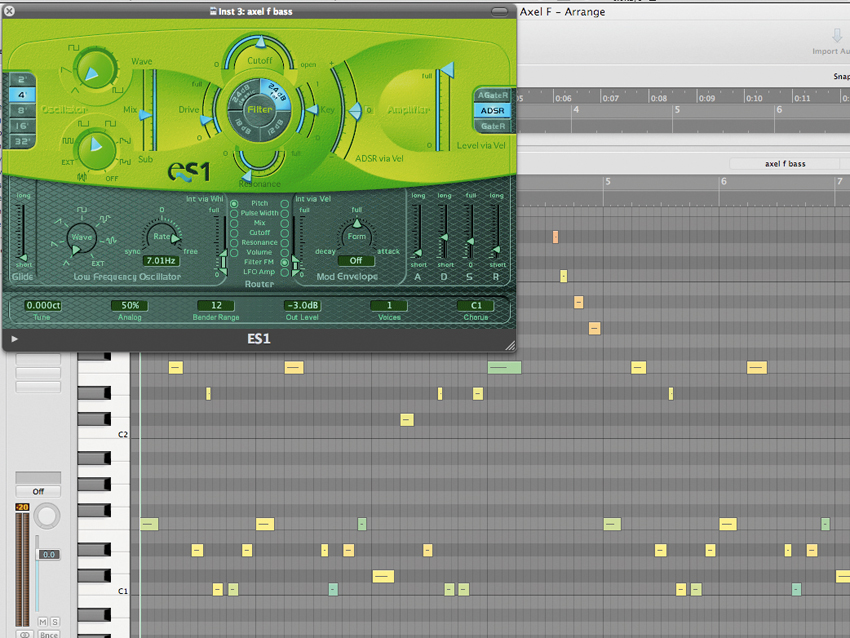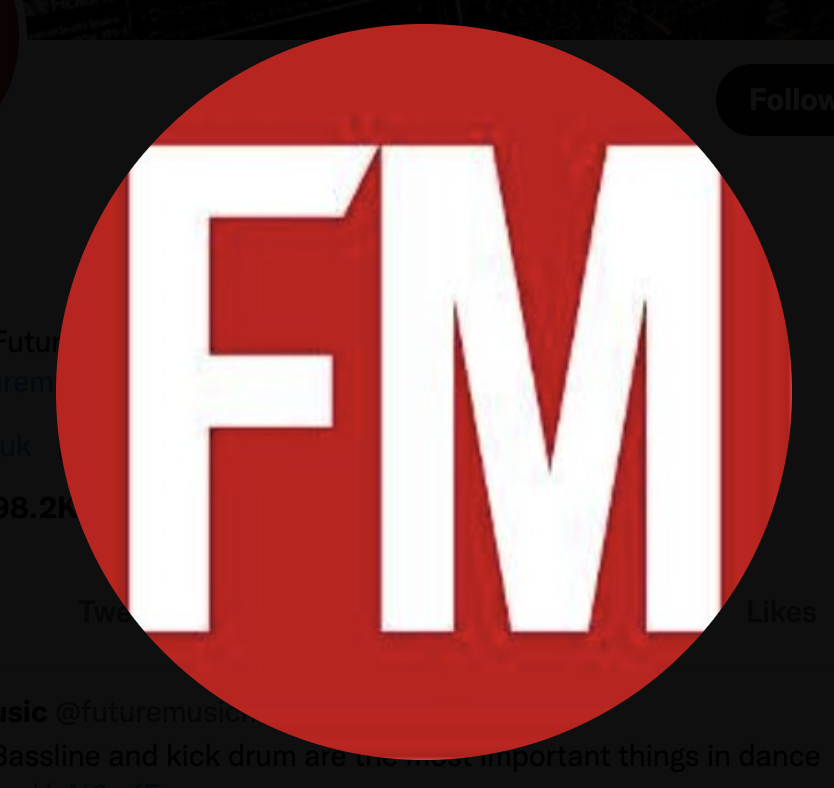Get the sound of Harold Faltermeyer's Axel F

Intro
Taken from 1984’s Eddie Murphy-starring crime caper Beverly Hills Cop, Harold Faltermeyer’s hit theme has become something of a cult classic, even being covered by the much-hated but hugely successful Crazy Frog.
On a more serious note, the Axel F theme is famous for a reason. Its simple melody line (originally played on a Jupiter-8) combined with the counterpoint/contrary motion Moog Modular bassline and Linndrum beat make this one of ’80s synth-driven instrumental music’s finest hours.
For this Get That Sound we’re going to recreate the first section of the main theme - just using Logic’s stock plug-ins. Let’s take a closer look…

The melody
Firstly, familiarise yourself with the original, which you can legally download or listen to on Spotify or YouTube. Check out what’s going on note-wise and try working out the melody first by ear, while playing along with the record.
As a couple of pointers, the tune is in F minor and the tempo is approximately 113bpm. Take a look at the screenshot of the matrix editor to get the exact notes and timing for the melody (and the bassline in Step 2). We’re using Logic’s ES1 plug-in in ‘1 Voice’ mono synth mode to recreate the lead sound here, with a saw wave set to 16’ and no sub oscillator.
Filter cutoff is set to about three quarters full, with a small amount of resonance and drive, and a little pitch modulation using the LFO to add movement and extra analogue-ness to the sound. On the amp envelope, try a fairly fast attack, medium decay/sustain and short release.

The bassline
Study the bassline on the original and copy by ear and/or check out the notes in the screenshot. Again, we’re using the ES1 as it can create most types of mono synth sound with ease. For the bassline sound, use a half/half mix of main wave set to a 4’ triangle and a pulse wave.
Again, use ‘1 Voice’ mode, the 24dB ‘fat filter’ with medium cutoff and resonance, turn off velocity using the ‘ADSR via Vel’ slider set to 0, and set the amp envelope to a fast attack, medium decay/sustain and a fast release. Also, set the bender range to 12 so you can do the octave pitch bend dive at the end of bar 4. Either play this in live, or write it in by hand using controller data.

The drums
For the drum parts we’re using MOTU BPM’s Beat Box Anthology and the Linndrum kit, which is exactly the sound we need. Once again, listen carefully to the record and try to copy the elements of the beat by ear.
There’s a 16th note hi-hat and shaker part, with each bit panned left and right, coupled with a kick drum part that accents the note timing of both the melody and bassline. The snare simply falls on the two and four beats.
Try to play the hats in live to get a more live drumming type feel, or experiment with velocity to get the part as close to the original as you can. The kick and snare only need subtle velocity changes so don’t go overboard. Finally, add in the Linndrum clap part on the last bar of the cycle by copying it by ear from the original. It helps to split each element of the beat up onto separate channels so that each part can be mixed and treated independently.

Finish touches
Now that all the elements are in place there are a couple of effect treatments to add to get our recreation more like the original. Firstly, add a stereo delay to the melody line, with left right mix set to 15%, low cut set to 160Hz and a crotchet groove on the left channel and quaver on the right. This works well and sounds pretty authentic.
Also add the Ensemble plug-in set to ‘3 Voice’ mode, with LFO 1 set to 43% intensity and a rate of 0.833, plus LFO 2 set to 24% intensity and a rate of 0.733Hz. There’s no processing needed on the bassline here, though a little compression can help to even things out.
In terms of the drums, the order of the day is a nice ’80s-sounding digital reverb and we’re using the Audio Damage Reverence plug-in for this task. Don’t worry about adding too much reverb here at first, as it’s the ’80s sound we’re after, but a little careful use of predelay will help the kick, snare and hats cut through even if there’s a long reverb (on the snare for example).
Don’t forget to add a tape delay to the clap as well (see the screenshot). Although there’s not a lot going on in terms of processing, it just goes to show that a simple beat, melody and bassline, combined with subtle processing, is sometimes all you need to create a classic.
Future Music is the number one magazine for today's producers. Packed with technique and technology we'll help you make great new music. All-access artist interviews, in-depth gear reviews, essential production tutorials and much more. Every marvellous monthly edition features reliable reviews of the latest and greatest hardware and software technology and techniques, unparalleled advice, in-depth interviews, sensational free samples and so much more to improve the experience and outcome of your music-making.
